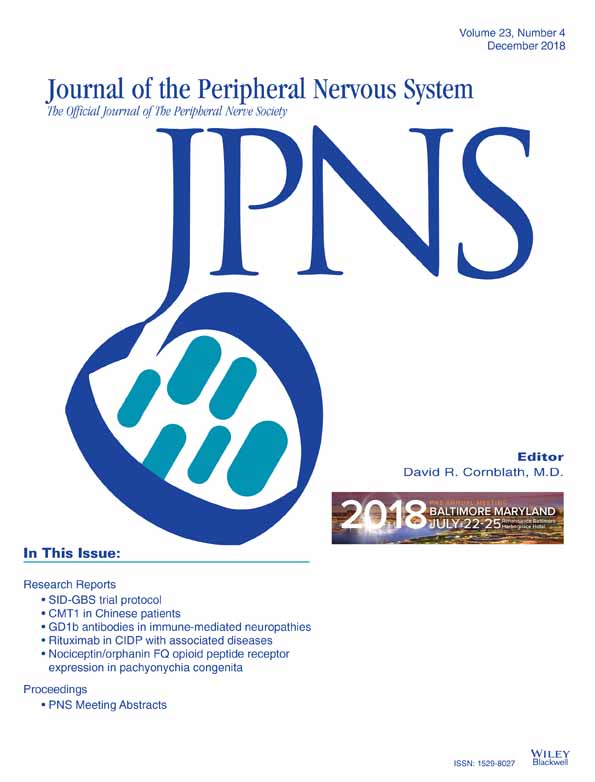Rituximab in chronic inflammatory demyelinating polyradiculoneuropathy with associated diseases
Abstract
We aimed to analyse the response to rituximab in a cohort of chronic inflammatory demyelinating polyradiculoneuropathy (CIDP) patients with associated disorders. We conducted a clinical and electrophysiological retrospective monocentric study in 28 CIDP patients. Response to rituximab was defined as (a) a five-point increase in the Medical Research Council sum score or a one-point decrease in the Overall Neuropathy Limitations Scale score, compared to the score at the first rituximab infusion, or (b) the discontinuation of, or reduced need for, the last treatments before rituximab initiation. Twenty-one patients (75%) were responders to rituximab. The median time before response was 6 months (1-10 months). Only two patients needed to be treated again during a median follow-up of 2.0 years (0.75-9 years). Interestingly, the response rate was good in patients with associated autoimmune disease (5/8) and similar to the response rate observed in patients with a haematological disease (16/20) (P = 0.63). A shorter disease duration was associated with a better clinical response to rituximab (odds ratio 0.81, P = 0.025) and the response rate was better (P = 0.05) in common forms (83.3%) than in sensory forms (42.9%). No major adverse events were recorded. Rituximab is efficacious in CIDP patients with haematological or autoimmune disease. It improves clinical response and decreases dependence on first-line treatments.
CONFLICTS OF INTEREST
Dr. V. L. reports personal fees and non-financial support from Janssen, Gilead; personal fees from Servier, Abbvie, and Roche, outside the submitted work. Dr. C. L. reports personal fees from Biogen, Novartis, Merck Serono, and Sanofi Genzyme, outside the submitted work. Other authors have nothing to disclose.




